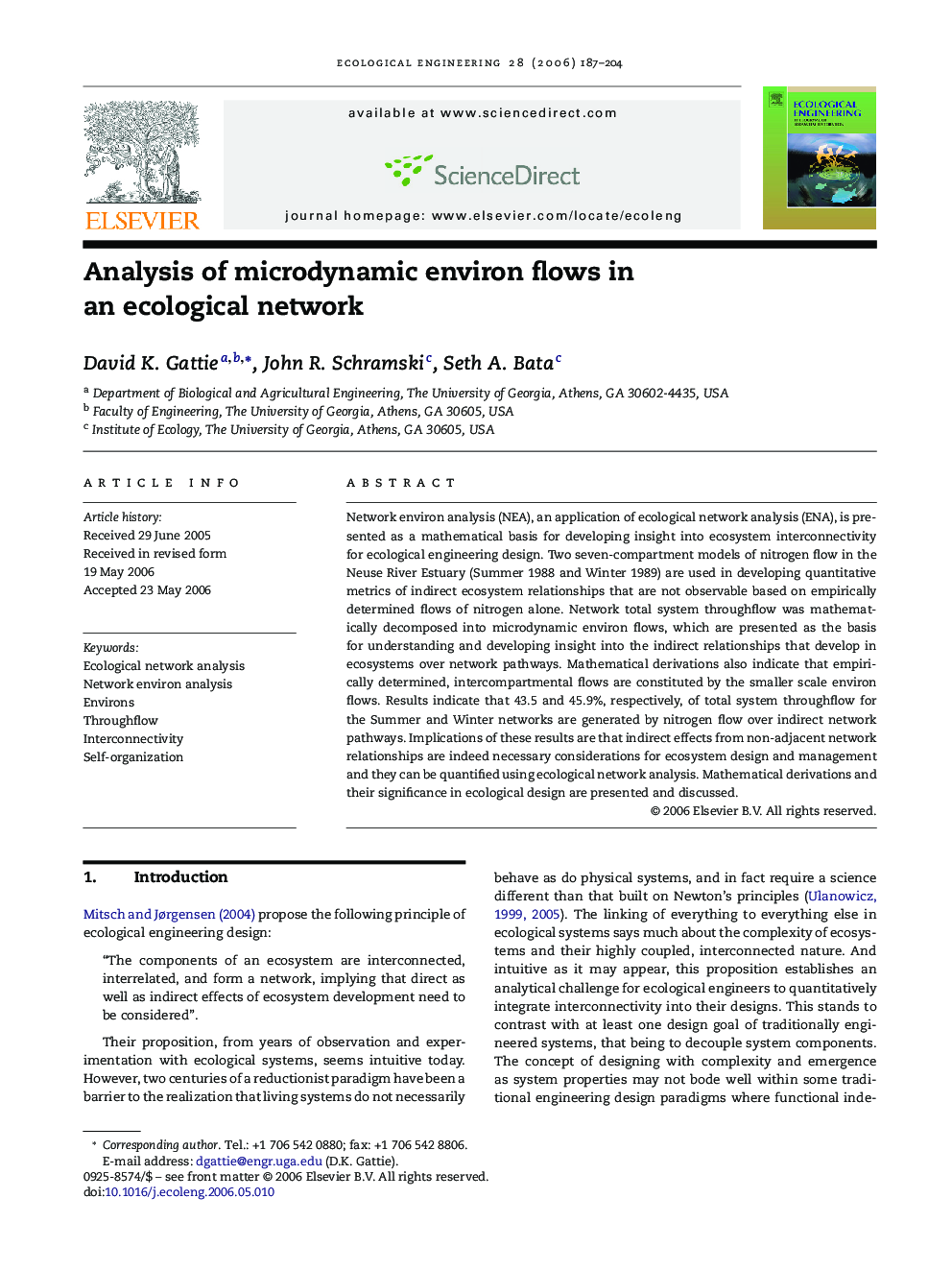| Article ID | Journal | Published Year | Pages | File Type |
|---|---|---|---|---|
| 4391154 | Ecological Engineering | 2006 | 18 Pages |
Network environ analysis (NEA), an application of ecological network analysis (ENA), is presented as a mathematical basis for developing insight into ecosystem interconnectivity for ecological engineering design. Two seven-compartment models of nitrogen flow in the Neuse River Estuary (Summer 1988 and Winter 1989) are used in developing quantitative metrics of indirect ecosystem relationships that are not observable based on empirically determined flows of nitrogen alone. Network total system throughflow was mathematically decomposed into microdynamic environ flows, which are presented as the basis for understanding and developing insight into the indirect relationships that develop in ecosystems over network pathways. Mathematical derivations also indicate that empirically determined, intercompartmental flows are constituted by the smaller scale environ flows. Results indicate that 43.5 and 45.9%, respectively, of total system throughflow for the Summer and Winter networks are generated by nitrogen flow over indirect network pathways. Implications of these results are that indirect effects from non-adjacent network relationships are indeed necessary considerations for ecosystem design and management and they can be quantified using ecological network analysis. Mathematical derivations and their significance in ecological design are presented and discussed.
